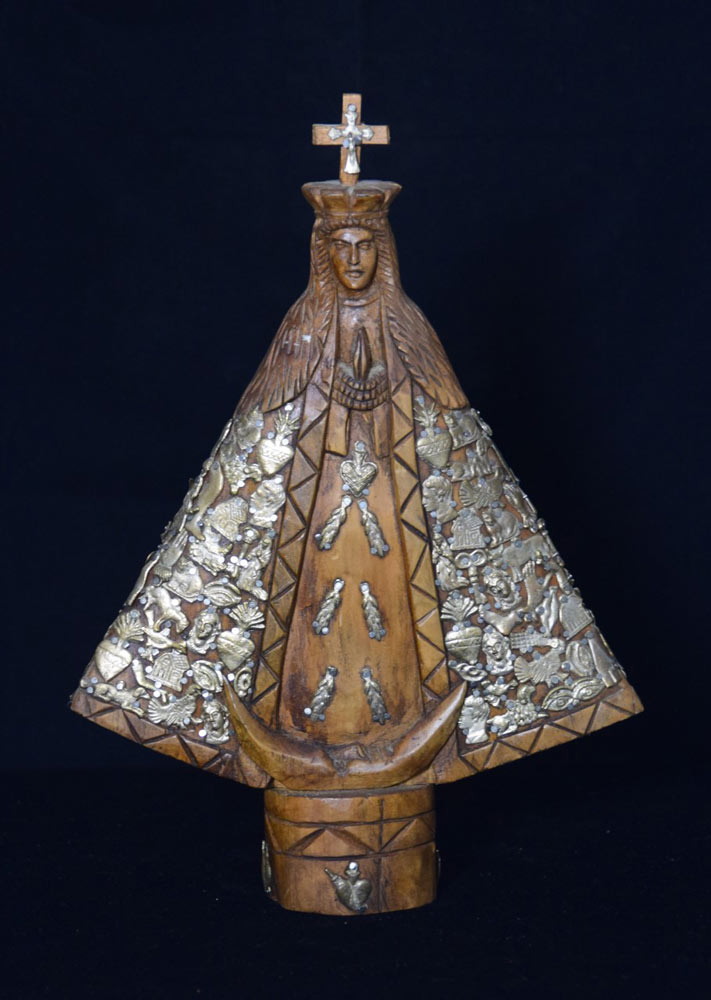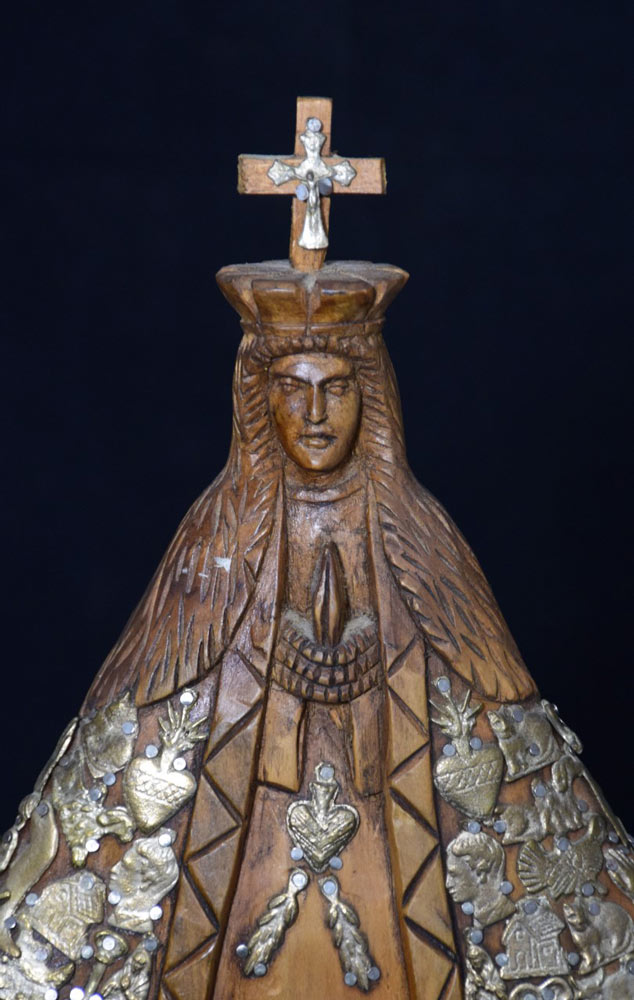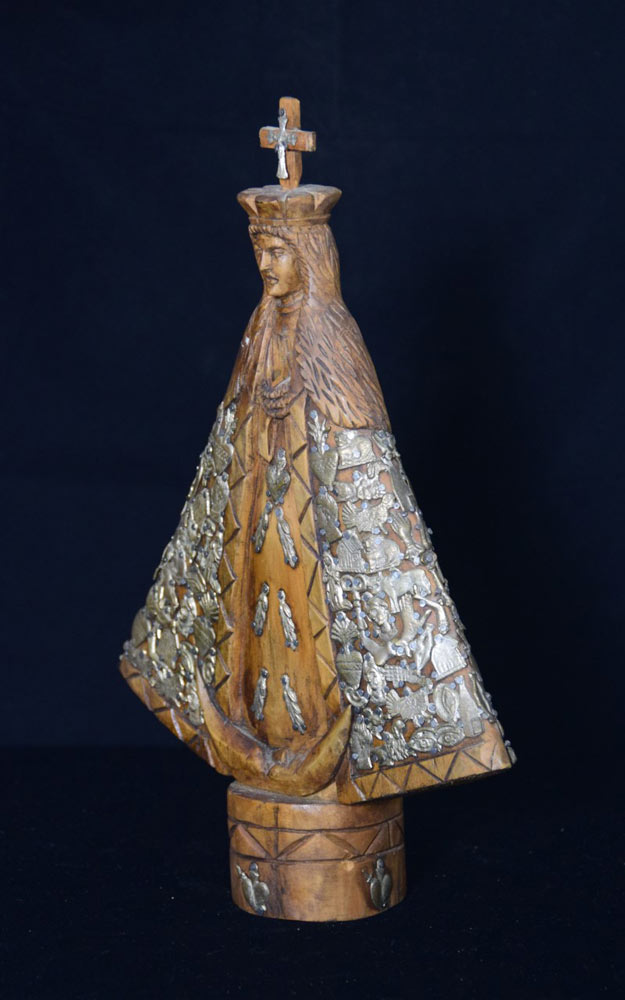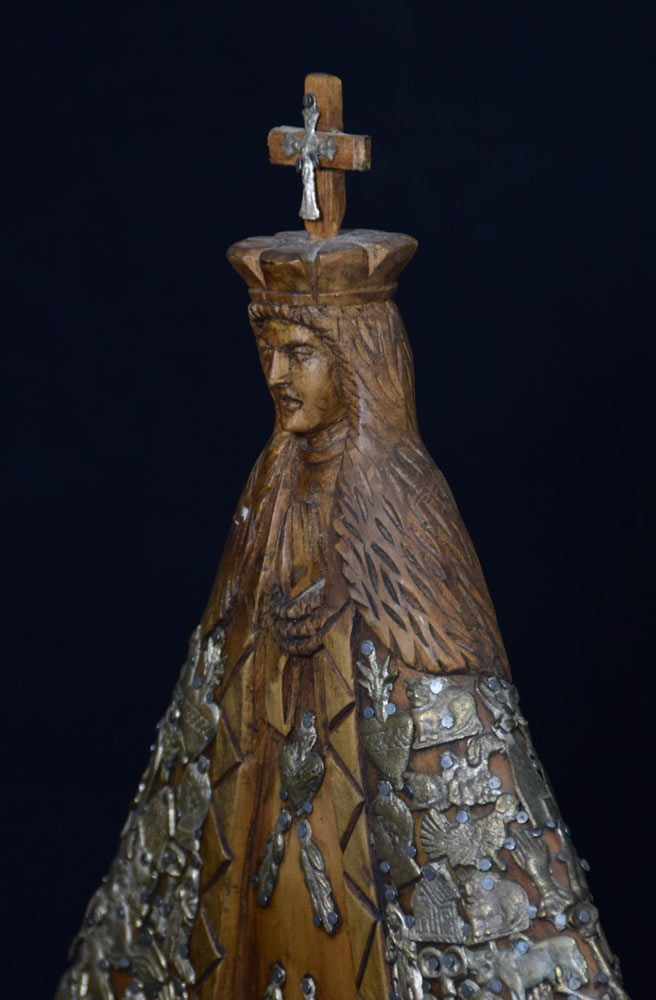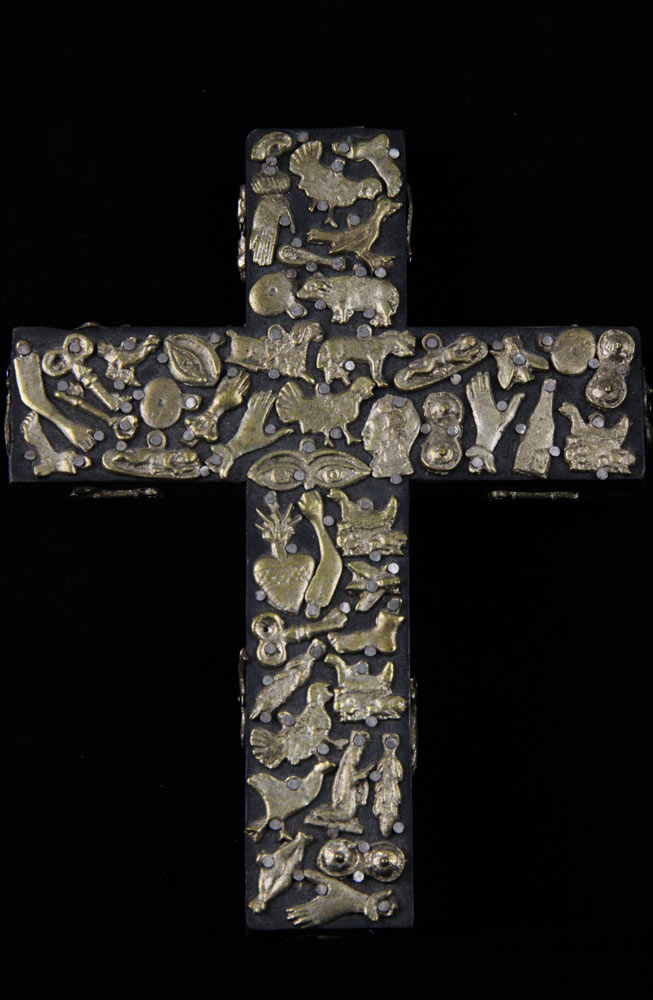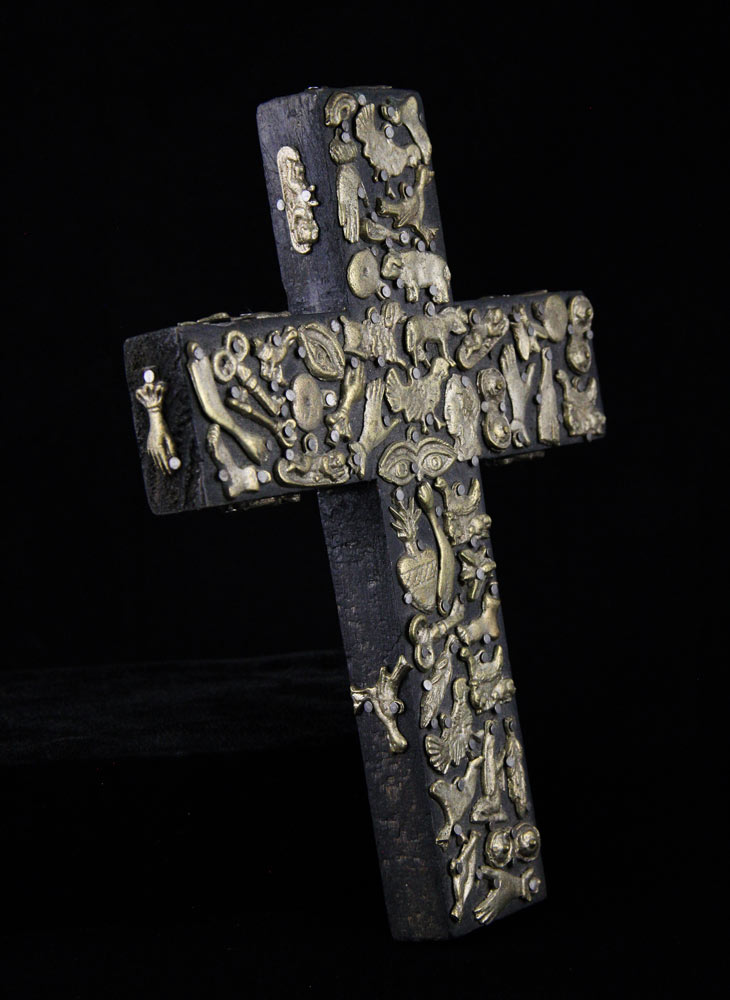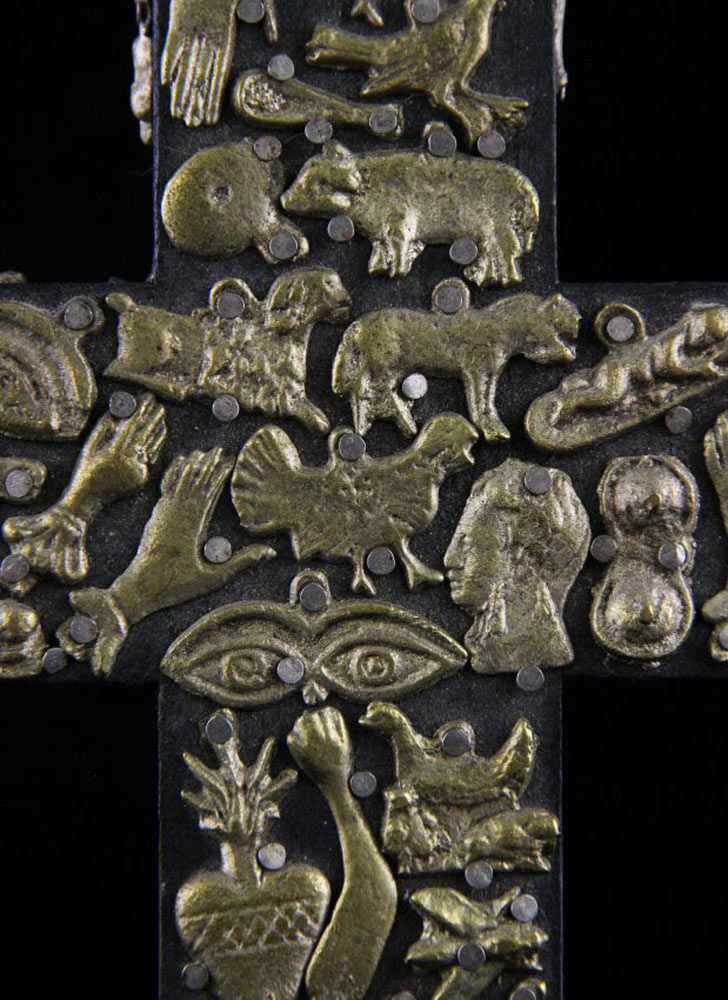Santas: The Feminine Divine
Curated by Carol Lopez
Since the establishment of the Spanish viceroyalties, the state courts, religion, and daily living were dominated by the Catholic faith. In the process of conversion after the conquest, the Catholic Church produced religious artworks including venerations to Christ, the Virgin Mary, the Saints, and Angels. Colonists were subject to devotions, and women were specifically encouraged to devote and emulate their lives after the example set by the Virgin Mary and female saints.
Catholics in Viceregal Latin America had many ways to demonstrate their devotions to holy figures, such as setting aside pesos for capital funds to support the Church in honor of their patron saint. These Santas included: The Virgin of Guadalupe, Our Lady of Sorrow, the Immaculate Conception, Our Lady of Remedies, St. Claire, St. Theresa, St. Mary Magdalene, St. Veronica, St. Rita, St. Rose of Lima, and St. Ignacia.
Sacred rituals in colonial Latin America were infused with spirituality and ancient American and Catholic devotions. New Spain and Peru developed visual iconographies that embodied the interactions of European and indigenous traditions. It gave a way for the people to express themselves, through objects, images, and rituals to the divine.
Our Lady of Guadalupe
Our Lady of Guadalupe is a cultural and religious symbol of Mexico, signifying grace, perfection, virtue, and meztisaje (mixing). This small wooden retablo (altar) displays the Guadalupe adorned with cacti and painted flourishes in the popular vernacular style.
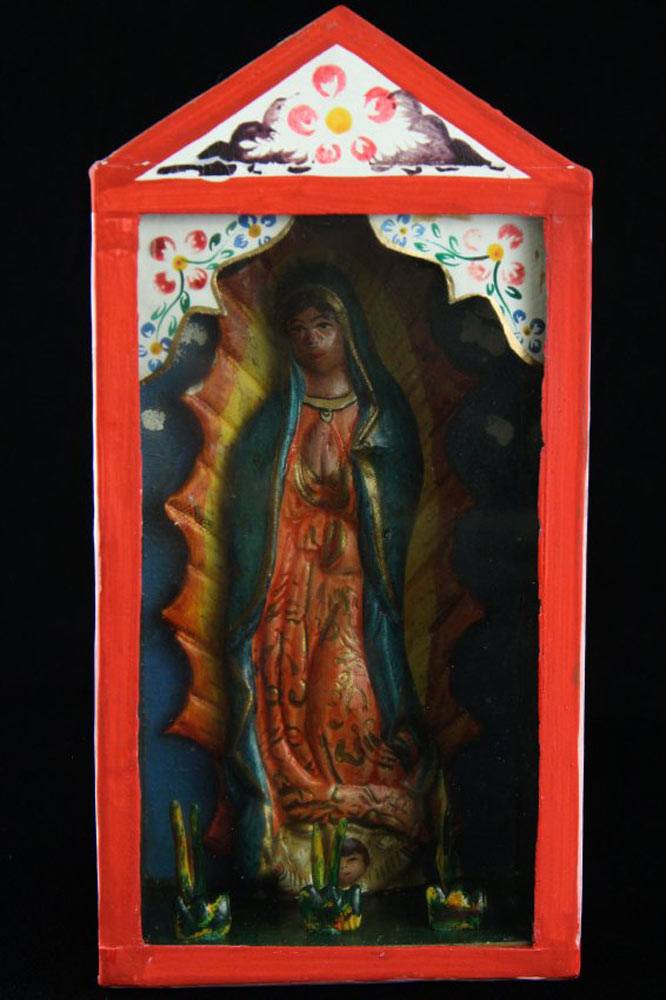
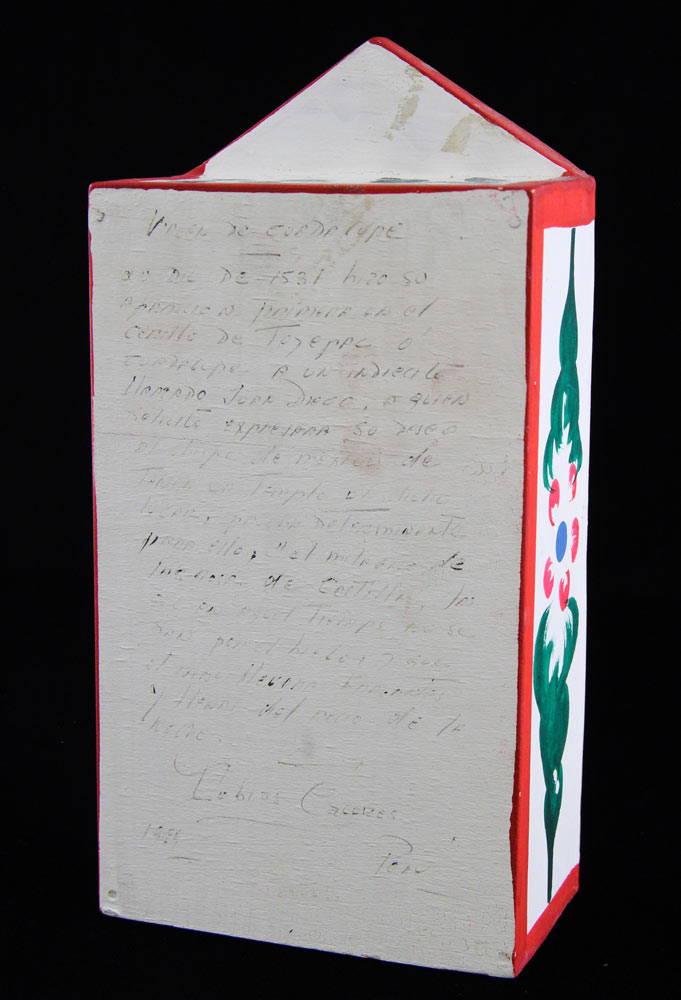
Militant Female Santa
The Militant Santa once belonged to an abandoned Catholic Church near Porto Alegre, Brazil and was used for public veneration and ritual. This figurine embodies 16th century Baroque naturalism made evident by the flowing drapery and Contrapposto (asymmetrical/s-shaped) stance. A silver crown was later added by the donor.
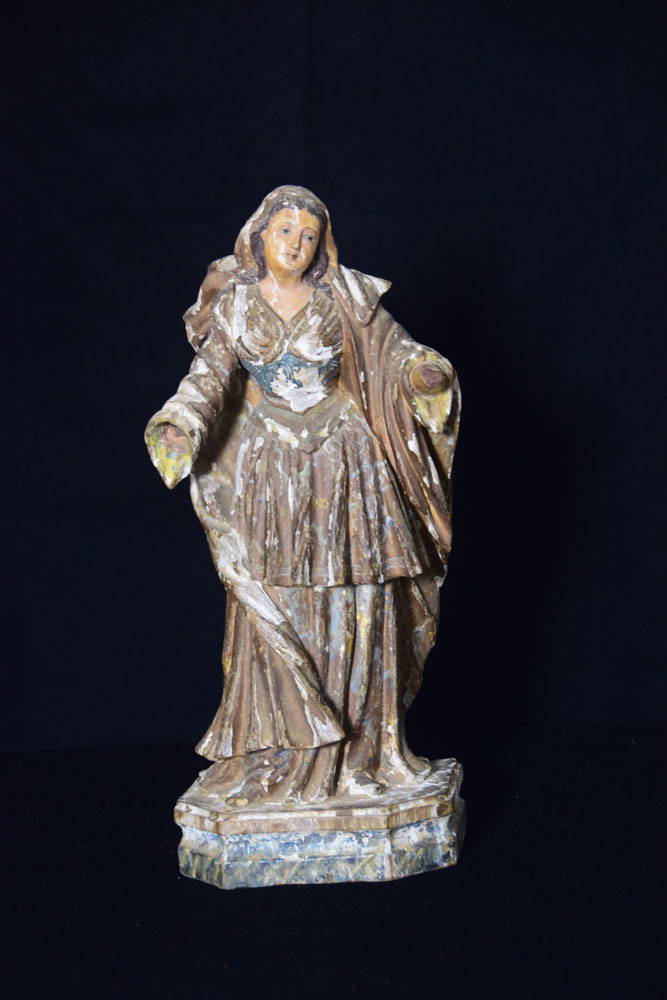
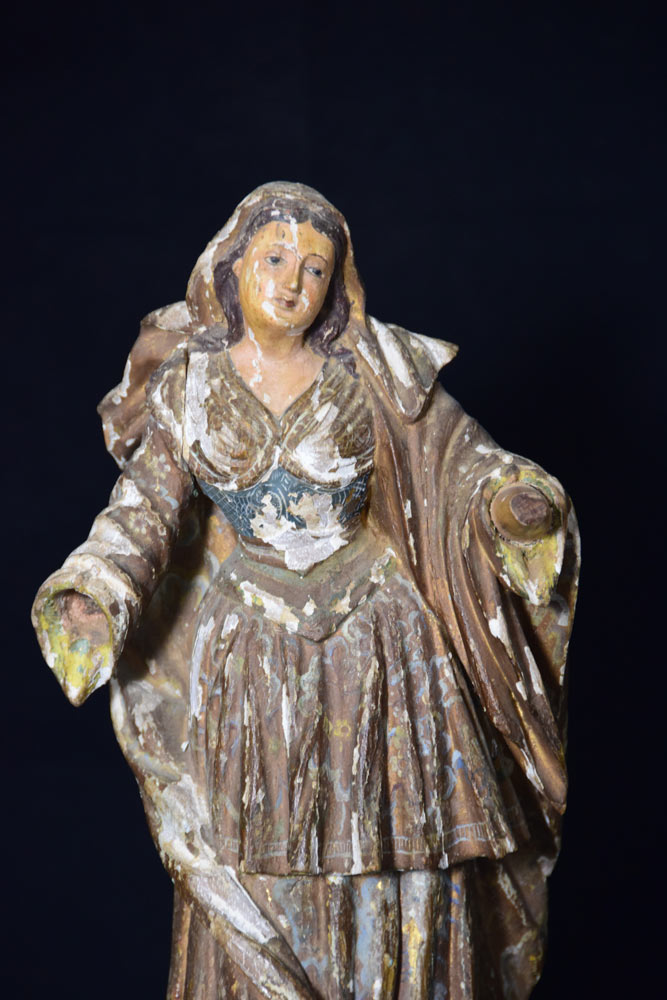
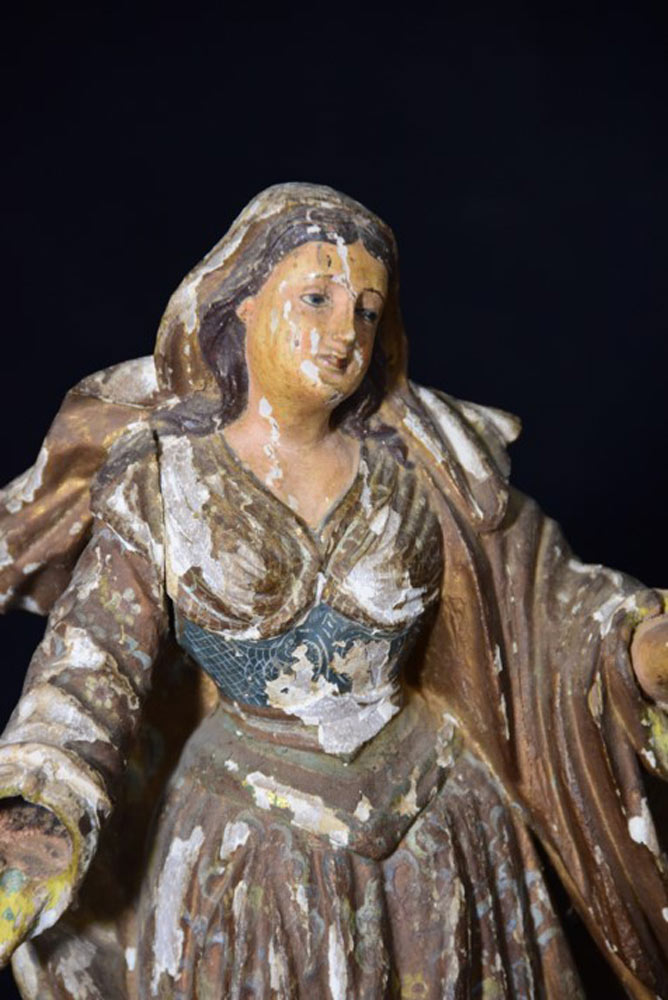
The Virgin of Solitude
La Virgin de Soledad (The Virgin of Solitude) was a Spanish devotion and the patroness of the bereaved, consolation, a happy death, and fight against loneliness. Her devotion spread to colonial Latin America, including present-day Oaxaca, Mexico, as shown in this Baroque styled sculpture by artist Antonio Garcia.
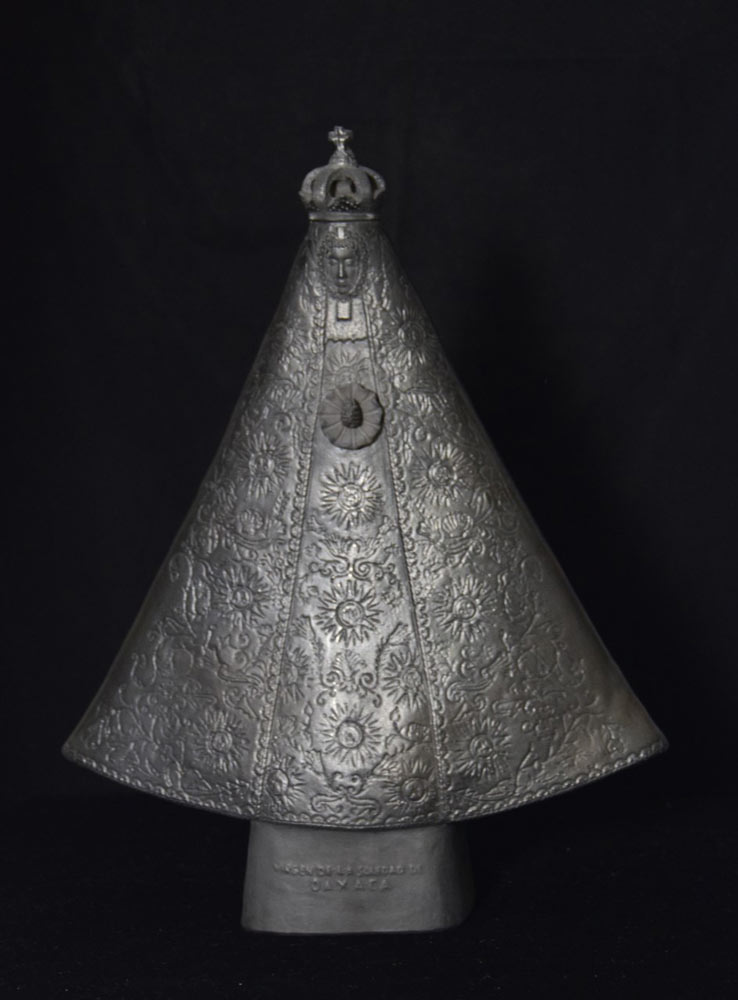
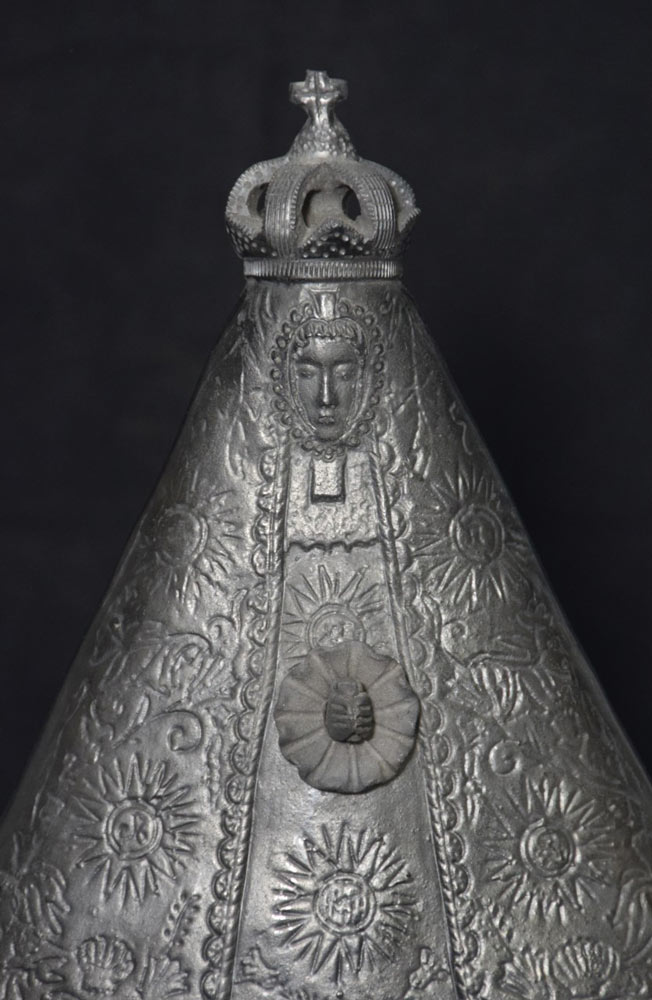
Virgin with Milagros
This Baroque wooden carving of the triangular Virgin is decorated with metal Milagros (miracles), which are small metal charms depicting healed body parts, animals, and various symbols of the faith. Devotees often decorated religious images with Milagros to indicate answered prayers and healing, as depicted by artist Lupita Hecht.
